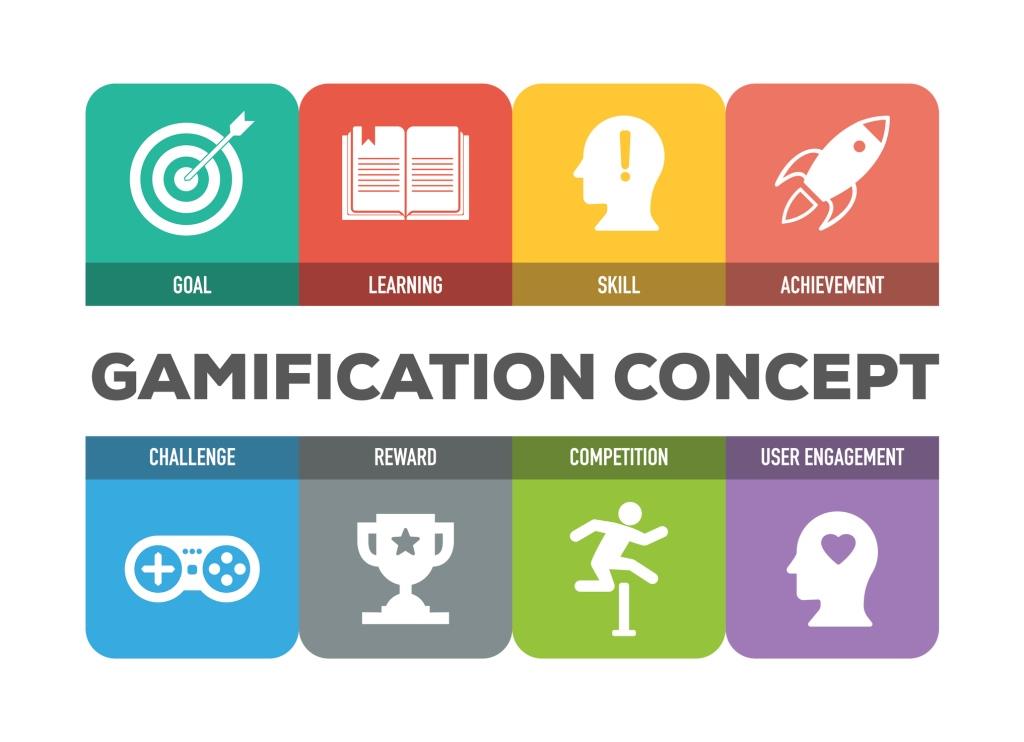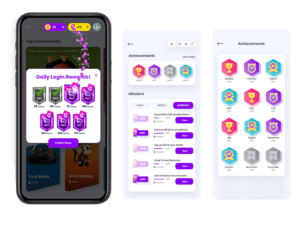Plenty is being written and told about what gamification is and why it works, but if you are to take this strategy seriously, you’ll have to know where it came from.
It may seem like gamification is a recent phenomenon, but the principles of gamification have been used by companies to engage customers as far back as the 1900s.
This article will give you a brief overview of the origins and history of gamification, depicting its efficacy as a marketing and customer interaction tactic through the ages.
There is plenty of information out there to answer “What is Gamification?” However, given that it has become quite a buzzword among digital marketers and software developers, it is important to get our facts right.

Plenty is being written and told about what gamification is and why it works, but if you are to take this strategy seriously, you’ll have to know where it came from.
It may seem like gamification is a recent phenomenon, but the principles of gamification have been used by companies to engage customers as far back as the 1900s.
This article will give you a brief overview of the origins and history of gamification, depicting its efficacy as a marketing and customer interaction tactic through the ages.
1900s
1908 – The Boy Scouts of America started awarding members with batches to commemorate their accomplishments. Scouts got batches for excelling in tasks and activities or behaving according to Boy Scout principles.
1912 – The brand American Cracker Jack popcorn starts to include a free prize in every bag – a tactic that goes on to become wildly popular across the industry.
1973 – Charles A Coonradt publishes The Game of Work, exploring the topic of decreasing productivity in America. The book suggests that some form of fun and games could help with boosting the engagement problem.
1978 – MUD1, the world’s first multi-user dungeon games comes to life, Developed by Roy Trubshae and Richard Bartle, it used a text-based interface to light the spark that would lead to the explosion of online social gaming.
1980s
1980 – What Makes Things Fun to Learn: A Study of Intrinsically Motivating Computer Games by Thomas Malone is published.
1981 – American Airlines inaugurates AAdvantage, the first frequent flier programme in history. It intended to encourage loyalty from customers by offering rewards for frequent ticket purchases – a common model in modern marketing.
Thomas Malone also releases two articles : Toward a Theory of Intrinsically Motivating Instruction and Heuristics for Designing Enjoyable User Interfaces. These pieces explore lessons that can be extracted from computer games and applied to other fields.
1983 – The Holiday Inn releases the first hotel loyalty program.
1987 – National Car Rental starts the first car rental rewards program.
Clearly, loyalty programs are catching on.
1990s
1990 – With 30% of American homes owning a Nintendo Entertainment System(NES), a new breed of sophisticated gamers comes into existence.
1996 – Richard Bartle, who created MUD1 publishes Who Plays MUD1, and attempts to categorize gamers on the basis of how they actually play the game. This model would go on to serve as the basis of multiple gamification strategies.
1999– Fun given academics food for thought. Stephen W. Drapes published a paper positing that all software development must proceed with an effort to include enjoyment in their design. Needless to say, game mechanics are gaining positive recognition and being taken seriously at this point.
It was also in the 1990s that classrooms began including computers and started actively experimenting with using gamification for educational purposes. Games like The Incredible Machine and Math Blaster were quite the hit with kids, despite criticism that the games didn’t cover enough skills and lessons to cover their syllabus. Essentially, they focused on a small sets of rather rudimentary skills, like addition and subtraction. They didn’t teach children how to approach and solve more complicated mathematical operations.
2000s
2002 – Nick Pelling creates the term Gamification. In the same year, the Serious Games Initiative (SGI) was created to oversee the development of certain games for the US military. It wanted to “help usher in a new series of policy education, exploration, and management tools utilizing state of the art computer game designs, technologies, and development skills”.
2005 – Rajat Pahari creates and releases Bunchball, the first modern gamification platform designed to boost user engagement on websites by adding game mechanics to websites.
2007 – Kevan Davis created Chore Wars, a site designed to encourage people to do chores by turning the process into a game.
2010 – The website DevHub adds a point-based system to the site which accelerates user engagement by 70%.
2011 – The first ever gamification summit, with nearly 400 attendees is held in San Francisco. The same year, the Oxford Dictionary added ‘gamification’ to its shortlist for word of the year. The term is defined as ‘the application of concepts and techniques from games to other areas of activity’.
2012 – Gartner surmises that over 70% of Global 2000 Companies will have at least 1 gamified application by 2014. A book released in the same year (Reality is Broken by Jane McGonigal) states that 61% of surveyed CEOs, CFOs, and other senior executives confess to taking daily game breaks at work. More than half of them stated that the reason they play during work is in order “to feel more productive.”
2013 – Market analysis firm M2 Research projects that the global market for gamification will magnify from $242 million in 2012 to $2.8 billion in 2016.
2014 – 9/10 companies reveal that their gamification strategies have seen success.
2018 – According to gamify.com, this year was the one in which gamification was projected to amplify its market value to double of its 2016 value, standing at $5.5 billion.
—
As the above timeline depicts, gamification has a rich and intellectually stimulating history. It’s efficacy comes from the fact that it has been extensively studied, discussed and experimented with – both academically and within real-world industry practices. It is certainly not some recent trend that will die out once momentary attention fades. Rather, it is a tried-and-tested practice that you can feel considerably secure about, when you properly implement it.






